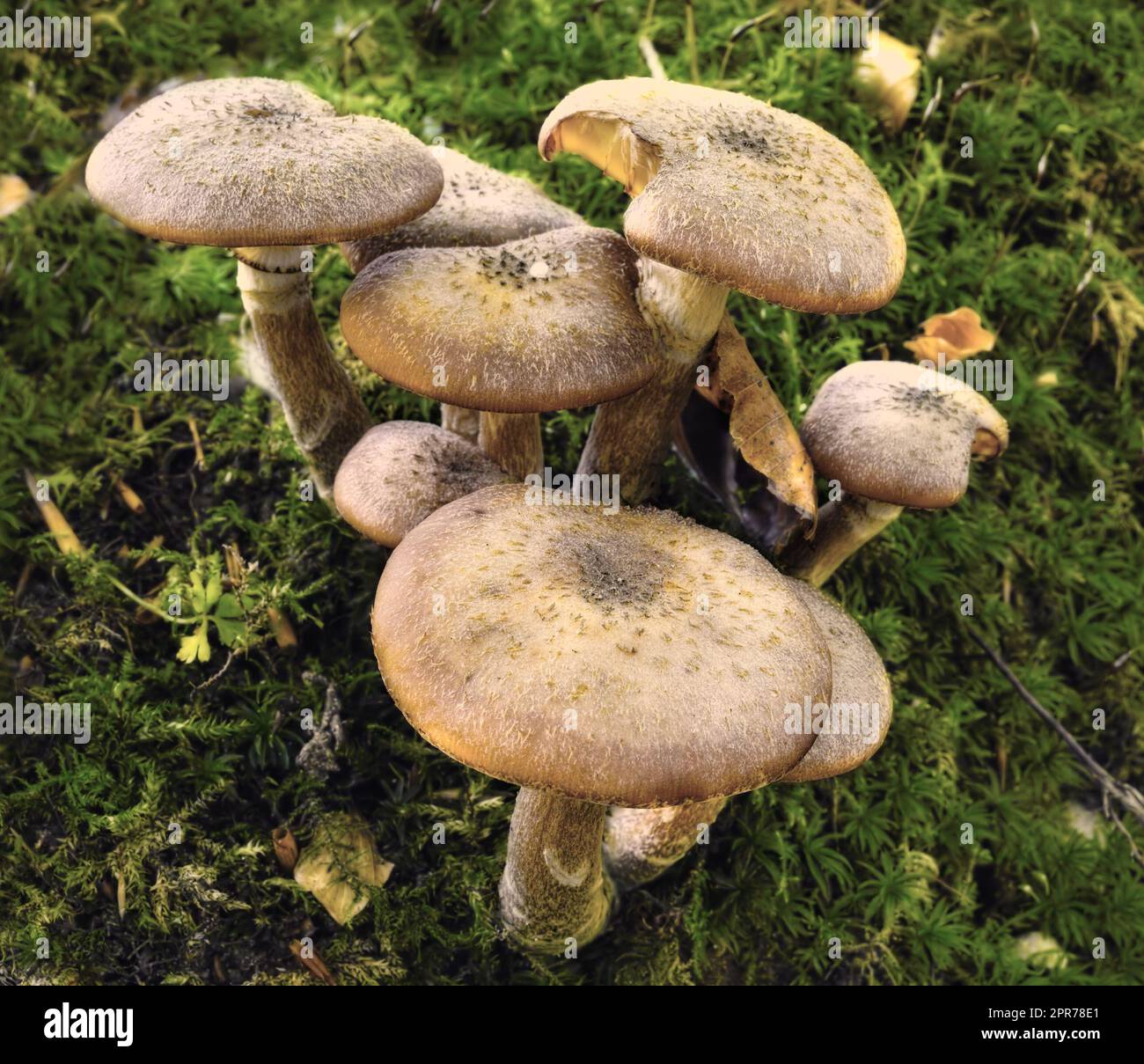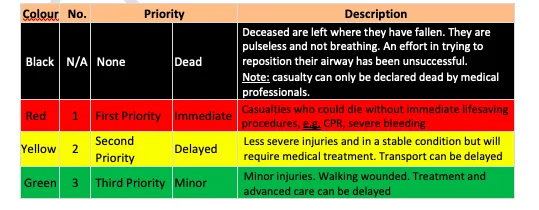Climate Change And The Rise Of Invasive Fungi: A Growing Health Concern

Table of Contents
The Impact of Climate Change on Fungal Growth and Distribution
H3: Expanding Habitats and Increased Prevalence
Warmer temperatures and increased humidity significantly impact fungal growth and distribution. These conditions create ideal environments for fungal proliferation, leading to a wider geographical spread of pathogenic fungi. This expansion means that populations previously unexposed to certain fungal diseases now face increased risk.
- Examples of Expanding Fungi: Candida auris, a particularly dangerous multi-drug resistant yeast, is spreading rapidly globally. Similarly, Aspergillus fumigatus, a common cause of invasive aspergillosis, is showing increased prevalence in areas experiencing warmer, wetter climates.
- Altered Rainfall Patterns: Changes in rainfall patterns influence fungal spore dispersal, increasing the potential for widespread contamination and infection. Heavier rainfall events can create more moist environments conducive to fungal growth, while prolonged droughts can concentrate fungal spores in limited water sources.
- Increased Incidence: Studies are reporting increased incidences of fungal infections in various regions, correlating with rising temperatures and changing climate patterns. For example, regions previously unaffected by certain fungal diseases are now experiencing outbreaks, highlighting the direct link between climate change and the geographical expansion of fungal pathogens.
H3: Increased Virulence and Resistance
Climate change may also be contributing to the evolution of more virulent fungal strains and increased resistance to antifungal medications. This poses a serious threat, as existing treatments become less effective.
- Mechanisms of Increased Virulence: The changing environment may select for fungal strains with enhanced virulence factors, allowing them to infect a wider range of hosts and evade immune responses more effectively. Genetic mutations arising from environmental stress may contribute to this increased virulence.
- Antifungal Resistance: The widespread use of antifungal drugs has already led to the emergence of drug-resistant fungal strains. Climate change may exacerbate this problem by creating selective pressure for even more resistant strains to survive and thrive. The development of novel antifungal treatments is crucial, yet challenging, given the complex nature of fungal biology.
The Health Impacts of Invasive Fungal Infections
H3: Increased Mortality and Morbidity
Invasive fungal infections carry significant health consequences, resulting in high mortality rates, particularly among immunocompromised individuals. These infections are often difficult to diagnose and treat, leading to prolonged illness and substantial healthcare costs.
- Life-Threatening Fungal Infections: Cryptococcosis, a fungal infection affecting the lungs and central nervous system, and histoplasmosis, an infection affecting the lungs, are examples of life-threatening fungal diseases. Their increased prevalence due to climate change puts a significant strain on healthcare resources.
- Healthcare System Burden: The rising number of invasive fungal infections is placing a substantial burden on healthcare systems worldwide. Increased hospitalizations, intensive care needs, and the cost of antifungal treatments add significantly to healthcare expenditures. The global rise in fungal infections necessitates improved healthcare infrastructure and resources.
H3: Impact on Vulnerable Populations
Vulnerable populations, including the elderly, immunocompromised individuals (such as those with HIV/AIDS or undergoing chemotherapy), and those in low-resource settings, are disproportionately affected by climate change-related fungal diseases.
- Reasons for Increased Vulnerability: These populations have weakened immune systems, making them more susceptible to fungal infections. Access to healthcare and antifungal medications is often limited in low-resource settings, further increasing their vulnerability.
- Health Disparities: Climate change exacerbates existing health disparities, as vulnerable populations are often more exposed to environmental risk factors and have less access to preventive measures and treatment. Addressing these inequalities is crucial in mitigating the impact of climate change-related fungal diseases.
Mitigation and Adaptation Strategies
H3: Strengthening Surveillance and Early Detection
Improved surveillance systems are essential to track the spread of invasive fungi and enable early detection of outbreaks. This requires robust data collection, analysis, and rapid response mechanisms.
- Advanced Diagnostic Tools: Investment in advanced diagnostic tools, including rapid molecular diagnostic tests, is crucial for accurate and timely identification of fungal pathogens.
- International Collaboration: International collaboration and data sharing are essential for monitoring the global spread of invasive fungi and implementing effective control measures. A coordinated global response is vital to effectively address this growing health threat.
H3: Developing New Antifungal Treatments and Prevention Strategies
Research and development of new antifungal drugs and preventative measures are critical to combating the rising threat of invasive fungal diseases. This requires significant investment in research and development.
- Novel Antifungal Targets: Research into novel antifungal targets is essential to overcome the challenges posed by drug resistance. This includes exploring new drug classes and exploring alternative treatment strategies.
- Vaccines and Preventative Strategies: Development of vaccines and other preventative strategies, such as improved hygiene practices and environmental controls, is vital in reducing the incidence of invasive fungal infections.
H3: Addressing Climate Change
Mitigating climate change is paramount in reducing the long-term threat of invasive fungal diseases. This requires global cooperation and a concerted effort to reduce greenhouse gas emissions.
- Greenhouse Gas Emission Reduction: Significant reductions in greenhouse gas emissions are necessary to slow down climate change and reduce the conditions that favor fungal growth and spread.
- International Cooperation on Climate Change: International cooperation on climate change is crucial to implement effective mitigation strategies and protect global health. A collective effort is essential to address this multifaceted problem.
Conclusion
The rise of invasive fungal infections, exacerbated by climate change, presents a significant and growing threat to global health. The expansion of fungal habitats, increased virulence, and resistance to antifungal drugs pose serious challenges to healthcare systems worldwide. The disproportionate impact on vulnerable populations further underscores the urgency of the situation. We must strengthen surveillance systems, develop new antifungal treatments and preventative measures, and, crucially, address climate change itself. Learn more about climate change and its impact on fungal diseases, support research initiatives, advocate for climate action, and promote public awareness of this growing health concern. Ignoring the link between climate change and the rise of invasive fungi: a growing health concern is no longer an option; proactive measures are vital for protecting global health security.

Featured Posts
-
 Explore The 2025 Porsche Cayenne High Resolution Interior And Exterior Photos
May 25, 2025
Explore The 2025 Porsche Cayenne High Resolution Interior And Exterior Photos
May 25, 2025 -
 M56 Motorway Incident Car Rollover Casualty Receives Treatment
May 25, 2025
M56 Motorway Incident Car Rollover Casualty Receives Treatment
May 25, 2025 -
 Mercedes Weakness How George Russells Decision Made The Difference
May 25, 2025
Mercedes Weakness How George Russells Decision Made The Difference
May 25, 2025 -
 All Resolutions Adopted At Imcd N V S Annual General Meeting
May 25, 2025
All Resolutions Adopted At Imcd N V S Annual General Meeting
May 25, 2025 -
 Lewis Hamilton And Former Teammate A Heartwarming Moment In F1 Testing
May 25, 2025
Lewis Hamilton And Former Teammate A Heartwarming Moment In F1 Testing
May 25, 2025
Latest Posts
-
 Rising Tennis Stars In China A Boost To The Nations Sporting Culture
May 25, 2025
Rising Tennis Stars In China A Boost To The Nations Sporting Culture
May 25, 2025 -
 Chinas Tennis Boom Top Players Impact According To Italian Open Chief
May 25, 2025
Chinas Tennis Boom Top Players Impact According To Italian Open Chief
May 25, 2025 -
 Allagi Pleysis Gia Tin Mercedes O Verstappen Pleon Ektos Sxedion
May 25, 2025
Allagi Pleysis Gia Tin Mercedes O Verstappen Pleon Ektos Sxedion
May 25, 2025 -
 Verstappen Vs Mercedes I Nea Dynamiki Stin Formula 1
May 25, 2025
Verstappen Vs Mercedes I Nea Dynamiki Stin Formula 1
May 25, 2025 -
 The Turning Point George Russells Key Decision For Mercedes Improvement
May 25, 2025
The Turning Point George Russells Key Decision For Mercedes Improvement
May 25, 2025
